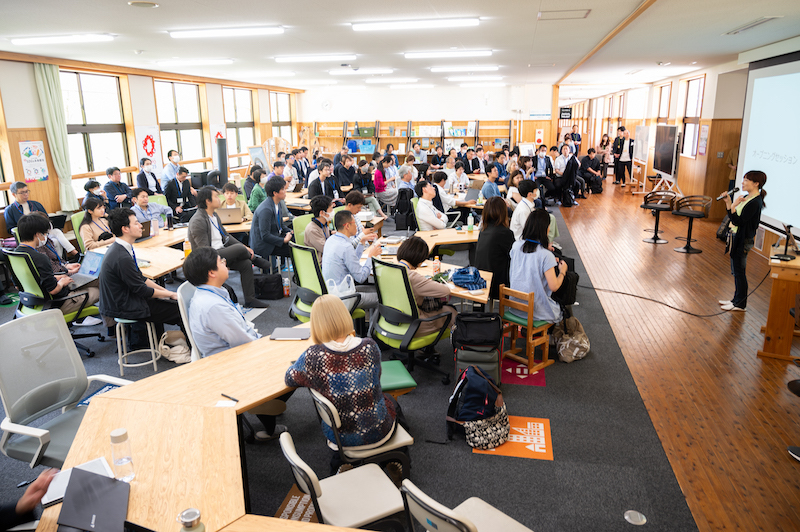Note: This website was automatically translated, so some terms or nuances may not be completely accurate.
Who are the drivers of "Collective Impact" that changes society? ~ The gap between large corporations with superior budgets and know-how, and grassroots movements united by purpose and vision ~

An increasing number of companies are proudly declaring social issue resolution as their policy and tackling this domain with the same intensity as their core business. Companies have long been engaged in socially contributory activities like CSR and CSV, but these were often perceived as a kind of "charity from the powerful." However, this approach is changing significantly. Recently, it's becoming more common for these functions to be placed under a CSO (Chief Sustainability Officer) and given high priority.
If companies genuinely dive into solving social issues, will the situation change dramatically? I attended a somewhat unconventional conference that seemed to offer insights into this question, and I'd like to share it.
<Table of Contents>
▼The Passion of Participants Truly Tackling Social Issues
▼"Collective Impact": Prioritizing Outcomes and Purpose Over Process
▼The Shock of "The Next Generation is a Minority"
▼Which Creates More Impact: Corporations or Grassroots?
The Passion of Participants Tackling Social Issues Head-On
This time, we participated in the " 2nd Beyond Conference 2023 " held in late May 2023. The venue was surprisingly located at the Kyoto Satoyama SDGs Lab "Kotosu," a facility built on the site of a former elementary school, about an 80-minute bus ride from Kyoto Station. Although it was an in-person event recruiting around 100 participants, it ultimately became a huge success with over 180 participants over the two days. The organizer was and Beyond Company (secretariat: NPO ETIC.), with co-organizers including the Kyoto City Government and the "Kyoto Super SDGs Consortium," comprising about 20 organizations such as Ricoh. This conference was designed to serve as a meeting place for companies, universities, and NPOs to collaborate and accelerate efforts to solve social issues, transcending differences in industry and business scale. The first conference was held in Kamakura in April 2022.
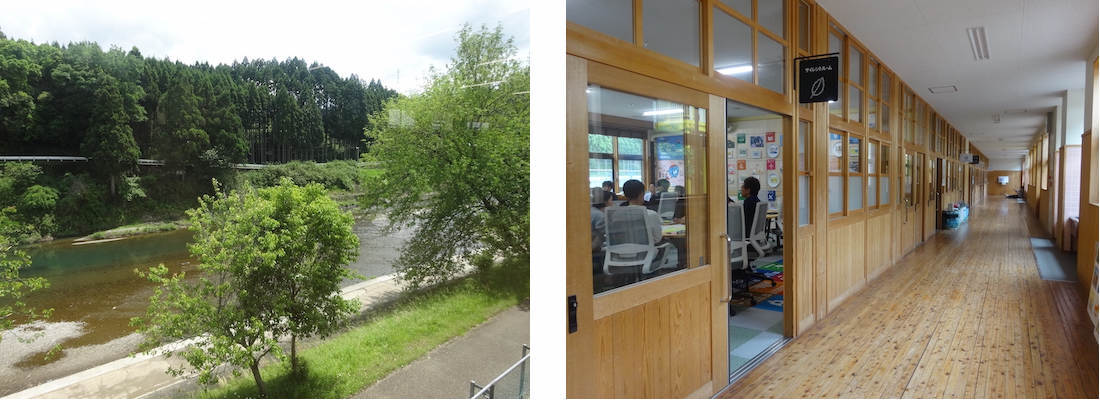
Rather than a conference aiming to attract large numbers of participants, it was closer to a networking party designed for sharing deep, mutual insights, finding resonance, and discovering skills. As this was the second gathering, several teams tackling diverse social issues had already formed since the first meeting, and progress reports on some concrete activities were shared here.
The event's subtitle, " Take the Stage, Why Not! ", was indeed planned with a school festival concept in mind. The interactions among participants were warm and friendly, creating a relaxed atmosphere. Yet, the stark contrast was the "unusually serious" nature of the discussions taking place – a feeling that was quite intriguing. Discussions about social issues often involve furrowed brows and heated exchanges. It can sometimes feel intimidating, so seeing people talk so actively and with such smiles was very refreshing to me. However, as I listened to the subsequent sessions and talked with participants, I discovered that this "sense of loose connection" is the defining feature of this conference.
Collective Impact: Achieving Results and Goals Rather Than Focusing on Process
First to take the stage for the opening session was Ai Nakajima, Editor-in-Chief of the Japanese edition of the Stanford Social Innovation Review and Visiting Professor at Doshisha University Graduate School. She stated that enhancing collaboration literacy is her personal mission. This is indeed crucial. Earlier, I mentioned that strengthening networks is one of the conference's objectives. "Creating connections" and "finding allies" are crucial points for elevating an idea from a personal vision to an actionable level. However, a psychological barrier often prevents people from taking that step. It takes courage for anyone to act on an idea and immediately knock on the door of a related NPO.
We often hear success stories where the vision of a startup leader resonates with others, who then gather to realize it, becoming allies. However, in reality, individual intentions don't easily align. Often, the more people gathered under a call to action, the more likely their visions run parallel. While social innovation initiatives do spring up in various places, their low feasibility stems from the challenge of achieving this kind of proper collaboration, says Mr. Nakajima.
Also speaking was Kanade Honma, who belongs to the NPO Florence while also being the founder of the general incorporated association Kodomo Takushoku Oendan (Child Home Meal Support Group). A former Mitsubishi Corporation employee, he changed careers in 2019, motivated by his own parenting experience to tackle social issues concerning parent-child relationships. To date, he has helped launch and provide operational consulting for child home meal programs in over 50 locations nationwide, and has conducted nationwide study sessions in collaboration with the Ministry of Health, Labour and Welfare.
Honma highlighted three key points in this initiative. First, the ultimate goal is "to aim for a future where 'Child Home Meal Delivery' is no longer needed." Honma pointed out that if we focus solely on "how to ensure daily meals are provided without fail," concentrating only on maintaining current activities, we risk perpetuating and exacerbating the situation rather than solving the underlying problem.
While the home meal delivery system itself is currently useful, he explained that the true solution lies in rendering such services unnecessary. He emphasized the need to constantly keep this in mind and explore entirely different approaches. He noted that maintaining immediate means can inadvertently become the goal itself, a pitfall common to any initiative. He stressed that those leading such activities must always maintain a bird's-eye view and regularly assess the current situation.
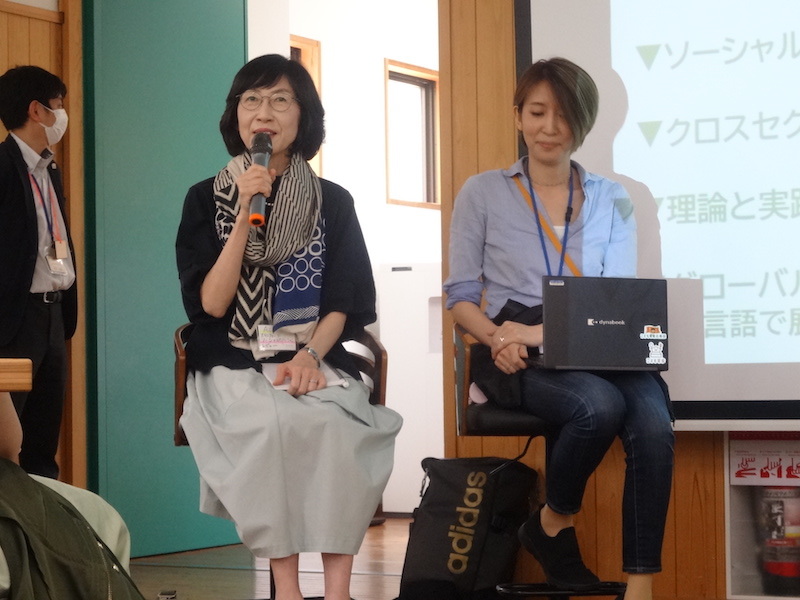
Right: Kanade Honma, NPO Florence / General Incorporated Association Kodomo Takushoku Oendan.
The second point raised was creating a situation where "people come flocking to help." This also ties into the earlier discussion about expanding collaboration and the importance of building a community—it's about how relying on just one lifeline is far too precarious.
While not directly related, a memorable phrase from this networking event was: "If people gather, a role will surely be found for each person. Please don't think you have nothing to offer." It's a common sense that if you participate, you should find your own role. Many people actually join with concrete plans to contribute their personal or company strengths here. However, many people likely share the desire to "participate in activities that benefit society" or "just get involved," even without a specific goal or theme. This Beyond Conference serves as the perfect platform for them. It also offers the potential for new encounters to spark that "Wow, that's how you can get involved!" kind of chemical reaction.
The phrase "a swarm of people ready to help" doesn't just mean having many people ready to fulfill specific roles. It also implies that if any difficulties arise during an initiative, someone will step forward to offer support and address the issue.
While "applying patches" might sound reactive and patchwork-like, providing services in new domains often involves problems arising one after another. If someone can then apply those patches seamlessly and in a timely manner, isn't that, in a sense, ideal? Having such diverse people running alongside you toward the same goal is incredibly reassuring. This might be the very ideal of " collective impact," the underlying theme of this conference.
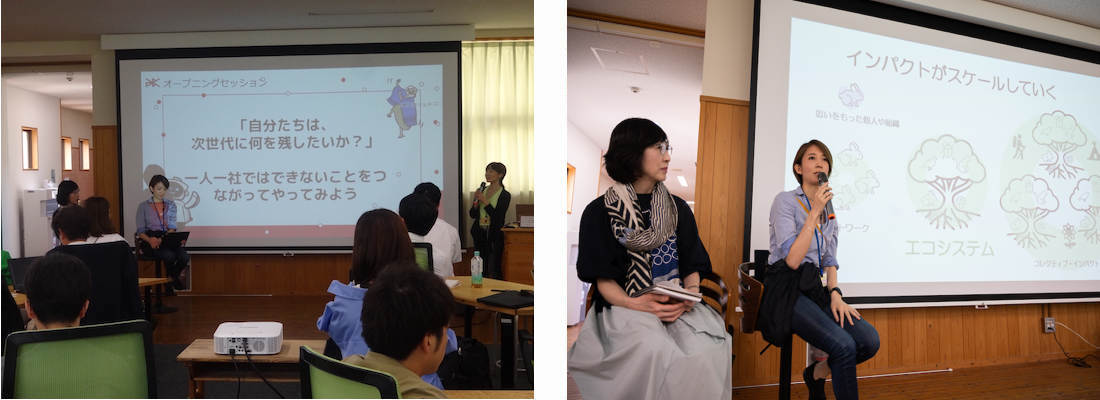
The third and final point is to keep firmly in mind that "one day, suddenly, you yourself could become the one affected." Anyone can fall into unfortunate circumstances in an instant. Understanding this possibility, we must act not just "for someone else," but with the conviction to build a society that leaves "no one behind," including ourselves. Otherwise, we risk perpetuating an unnatural hierarchy of "givers and receivers." Fundamentally, if we aim to create an environment where everyone can live equally, we must reaffirm that building that environment is the responsibility of society as a whole, including each individual.
The Shock of "The Next Generation is a Minority"
Mr. Nakajima emphasized the importance of thoroughly sharing these points. He noted that the third keyword, in particular, mirrors the very questions being asked on the global social innovation frontlines. Understanding that anyone can fall into that state at any time is crucial for solving the problem. Imagining what one would need in that situation and working towards it is the path that brings us closer to truly solving the issue. Regarding the theme of assisting impoverished households, Mr. Nakajima states that merely delivering supplies to struggling families is insufficient. We must simultaneously consider what is truly needed to eliminate their hardship. Furthermore, as symbolized by the challenges faced by these impoverished families, numerous social issues remain hidden or ignored. He points out that the misconception that "poverty like this doesn't exist in Japan" obscures their very existence.
According to Mr. Honma, one in seven children in Japan lives in poverty. They face not only economic hardship but also social isolation due to inadequate support reaching them. Beyond government assistance, reduced interaction with people around them diminishes even the opportunities to connect with such support. Social capital—the bonds of trust and connection within communities —has weakened across society. This problem manifests not only in parent-child relationships but across multiple layers, including hikikomori, single-person households, and the decline of local communities.
If 30% of the 1 million households in poverty are unable to send out an SOS, that represents a significant number. This is why we must go out to them (outreach), and that's how the home meal support service Mr. Honma works for began. He states that this initiative is driven not only by building and providing the system, but also by a desire to establish a culture where children and families across all regions naturally "support and are supported."
During the 2020 COVID-19 pandemic, the Home Meal Support Group also faced difficulties continuing its meal delivery activities. However, Mr. Honma considers it fortunate that the Ministry of Health, Labour and Welfare and others decided to focus resources here, enabling rapid expansion. Here too, timely large-scale government participation occurred, followed by a "collective impact" where companies also contributed, such as by providing masks. Now in its fifth year, the group shares its know-how with 100 organizations and supports 10,000 households.
With this experience, the position of connecting organizations with government bodies now seems firmly established as the core focus. Within each organization, not only staff but also diverse volunteer members join the team, and here too, community building appears to be spreading organically. Furthermore, when delivering meals and visiting homes, the circumstances within those households naturally become visible, providing highly valuable information from a community watch perspective. The words shared at the session's end —"A society that abandons its toughest members inevitably becomes one where everyone can be abandoned "—truly struck a chord.

Mr. Nakajima stated, "The next generation is precisely a minority. Given the generational composition ratio, their voices don't reach society. This leads to a pervasive mood of resignation." He emphasized that going forward, it is necessary to transcend generations, organizations, and vested interests. Furthermore, if we are to transcend the time axis, the kind of involvement seen in the earlier administrative example is also crucial.
What's crucial is an ecosystem where countless grassroots impacts scale up continuously. The question is how to expand and reproduce this. According to Mr. Nakajima's research, the remarkable growth of US NPOs stems not only from strong management and clear vision, but primarily from having powerful partners who support them. Though he himself is an editor, he sees his own work as operating within a similar ecosystem. He describes gathering people with content that benefits society and creating books as a team as a kind of collective impact situation.
Which creates greater impact: corporations or grassroots movements?
Finally, while noting impressions from other sessions I attended, I'd like to explore a question I personally have: " Which is more effective for creating impact—large corporations or the grassroots activities of individuals? "
To reiterate, "Collective Impact" refers to government, corporations, NPOs, foundations, citizens, and others collaborating across organizational boundaries to tackle specific social issues. Based on this concept, as mentioned earlier, it's crucial that participants bring the optimal skills and expertise for their respective roles in the initiative. What drives this participation is "empathy" – the understanding that people are drawn not to business plans, but to shared values and vision. People are attracted to these values and vision; they are drawn to them.
A frequently used keyword at this conference was " crossing boundaries." There is no doubt that the shared aspirations of people transcending all barriers, and the connections formed, become a major driving force for solving social issues. This is fundamentally based on the connection of individual aspirations. In this sense, I felt that the execution power of what used to be called "grassroots movements" has become exponentially stronger than it was a decade ago. On the other hand, there seem to be subtle areas where corporate participation from the initial stages can be challenging. Identifying these precisely, making them visible, and posing them to society—that stance is something only grassroots movements can achieve.
However, it was frequently mentioned that significant support from companies leveraging their skills and know-how is, of course, highly welcomed. In the aforementioned home meal delivery service, the mechanism for continuously providing meals to individual households is crucial, requiring a massive workforce. Seino Transportation, a major logistics company, provides system support for this. While one might think that simply gathering enough manpower could make it work, if more efficient systems or technologies are available, they should be applied.
When large corporations participate, metrics for business viability are introduced, potentially creating conflicts between vision and profit. However, as Seino Transport stated, "It's crucial to provide solid support within our own business scope, at a level appropriate to our capabilities. Stretching beyond our means doesn't guarantee we can fulfill our responsibilities. Continuing without overextending is key." Pursuing business growth can happen in other fields, but they seem to be exploring what their existing assets can contribute to society moving forward.
From these perspectives, large corporations' participation is also effective in solving social issues. While celebrating the strengths of both sides—individual grassroots movements that are no less impactful—we should look forward to approaches from both angles. It was a gathering that inspired hope for a major wave arising from future "collective impact" through "cross-boundary" efforts, and a desire to participate in it.


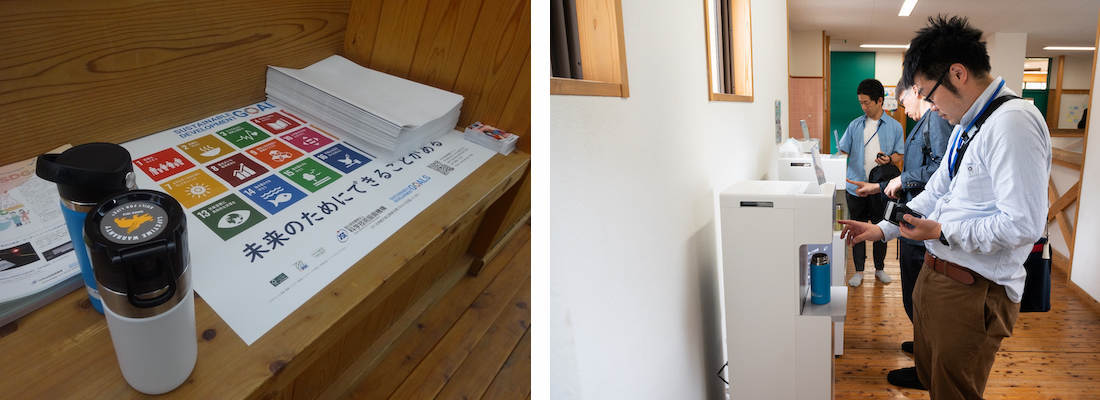
Was this article helpful?
Newsletter registration is here
We select and publish important news every day
For inquiries about this article
Author

Iguchi Osamu
PR Consulting Dentsu Inc.
Executive Officer
Chief PR Planner
We handle a wide range of services, from developing data-driven corporate PR strategies to strategic PR for products and services, viral campaigns utilizing video content, and municipal PR. Proposes initiatives like "PR IMPAKT," which creates content likely to trend in news and social media, and "Information Flow Structure," which unravels information pathways across media. Over 30 years of experience in PR agencies. Recipient of numerous awards including "World's Top 50 PR Projects," "Cannes Lions Grand Prix," "Asia Pacific Innovator 25," and "Gunn Report Top Campaigns 100." Has served as a judge for numerous domestic and international awards, including Cannes Lions, Spikes Asia, SABRE Awards Asia-Pacific, PR Awards Asia, Japan PR Association PR Award Grand Prix, and Nikkei SDGs Idea Competition. Author of "The Essence of Strategic PR: Five Perspectives for Practice" and co-author of "Learning from 17 Successful Cases: Local Government PR Strategy."
